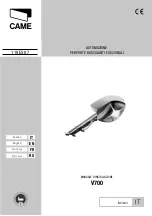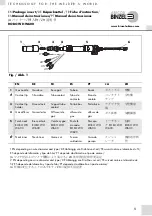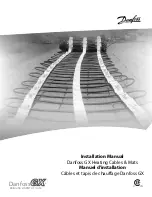
This document contains information considered proprietary and confidential to Tecnar Automation Ltd
40101-00020-00– Rev 1.2
Revision date: 2017-07-31
Page 7 of 48
should be taken to prevent hazardous situations. Refer to “Safety in Welding
and Cutting” (ANSI Standard Z49.1) and the operating information for the
equipment being used.
When not welding, make certain no part of the electrode circuit is touching
the work or ground. Accidental contact can cause overheating and create a
fire hazard.
Do not heat, cut or weld tanks, drums or containers until the proper steps
have been taken to ensure that such procedures will not cause flammable or
toxic vapors from substances inside. They can cause an explosion even
though they have been “cleaned”. For information, purchase “Recommended
Safe Practices for the Preparation for Welding and Cutting of Containers and
Piping That Have Held Hazardous Substances”, AWS F4.1 from the
American Welding Society (see address above).
Vent hollow castings or containers before heating, cutting or welding, as they
may explode.
Sparks and spatter are thrown from the welding arc. Wear oil free protective
garments such as leather gloves, heavy shirt, cuff less trousers, high shoes
and a cap over your hair. Wear earplugs when welding out of position or in
confined places. Always wear safety glasses with side shields when in a
welding area.
Connect the work cable to the work as close to the welding area as practical.
Work cables connected to the building framework or other locations away
from the welding area increase the possibility of the welding current passing
through lifting chains, crane cables or other alternate circuits. This can create
fire hazards or overheat lifting chains or cables until they fail.
Use only compressed gas cylinders containing the correct shielding gas for
the process used and properly operating regulators designed for the gas and
pressure used. All hoses, fittings, etc. should be suitable for the application
and maintained in good condition.
Always keep cylinders in an upright position securely chained to an
undercarriage or fixed support.
Cylinders should be located:
Away from areas where they may be struck or subject to physical damage.
A safe distance away from arc welding or cutting operations and any other
source of heat, sparks, or flame.
Never allow the electrode, electrode holder or any other electrically “hot”
parts to touch a cylinder.
Keep your head and face away from the cylinder valve outlet when opening








































